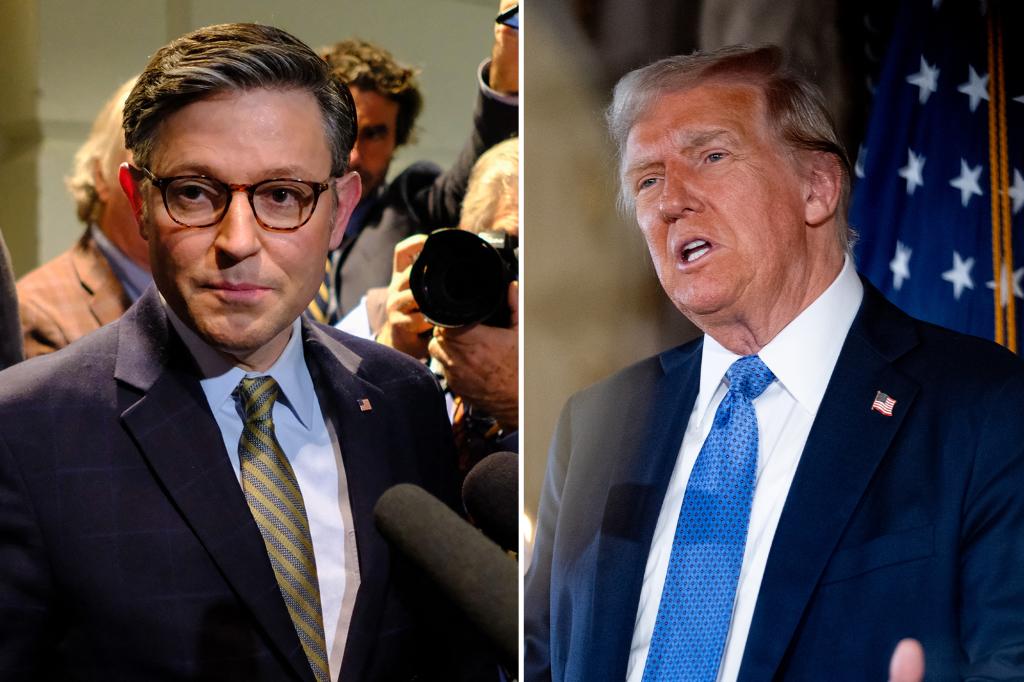Paragraph 1: Averting a Shutdown Crisis
House Republicans, after multiple attempts, finally reached a consensus on a short-term government funding bill, narrowly averting a shutdown just hours before the deadline. Speaker Mike Johnson, following intense negotiations, announced a "unified Republican conference" and guaranteed that a shutdown would be avoided. This crucial agreement came after a similar bill failed to garner sufficient support just a day earlier, highlighting the internal divisions within the GOP. The new bill aims to keep the government running until March 14, 2025, providing temporary relief while lawmakers work towards a longer-term solution.
Paragraph 2: Key Provisions and Bipartisan Negotiations
The stopgap bill includes critical funding measures, including $110 billion in disaster relief, primarily directed towards states ravaged by hurricanes. Additionally, it extends crucial agricultural subsidies for one year, providing vital support to farmers across the country. The bill’s passage hinges on bipartisan support, requiring a two-thirds supermajority in the House. House Minority Leader Hakeem Jeffries, who played a role in the previous bill’s failure, re-engaged in negotiations with Speaker Johnson to craft a compromise acceptable to both parties. This bipartisan effort underscores the urgency of the situation and the shared commitment to avoiding a disruptive government shutdown.
Paragraph 3: Debt Ceiling Dynamics and Trump’s Influence
A key sticking point in the earlier failed bill was a provision to suspend the US debt ceiling until January 2027. President-elect Donald Trump publicly advocated for the abolition of the debt limit, arguing it served no purpose other than psychological impact. His intervention, along with pressure from influential figures like Tesla CEO Elon Musk, played a significant role in the initial bill’s demise. Trump’s continued calls for addressing the debt ceiling added another layer of complexity to the already tense negotiations surrounding government funding.
Paragraph 4: Side Deal on Debt Ceiling and Spending Cuts
As part of the compromise, House Republicans agreed to a side deal involving the debt ceiling. They committed to raising the debt limit by $1.5 trillion in the next Congress through the budget reconciliation process, a maneuver that bypasses the Senate’s filibuster rule. Coupled with this commitment, the GOP also pledged to implement $2.5 trillion in federal spending cuts, reflecting their focus on fiscal responsibility. This agreement, while averting a shutdown, sets the stage for future battles over spending priorities and the national debt.
Paragraph 5: Trump’s Criticism and Blame Game
President-elect Trump didn’t hesitate to criticize Republicans who opposed increasing the debt ceiling, threatening primary challenges against them in 2026. He placed the blame for a potential shutdown squarely on the Biden administration, asserting that the current president should be responsible for resolving the issue before Trump takes office. This public pressure further complicated the negotiations and added fuel to the partisan divide surrounding government funding.
Paragraph 6: White House Response and Shutdown Contingency
The White House countered Trump’s accusations, placing responsibility for the initial funding bill’s failure on House Republicans. Press Secretary Karine Jean-Pierre stressed the importance of bipartisan cooperation and emphasized the potential disruption a shutdown would cause, including impacting the presidential transition process. Despite the uncertainty, the White House reaffirmed President Biden’s commitment to a smooth transition of power. Federal agencies began preparing for a potential shutdown, alerting employees about possible furloughs while assuring them of back pay once the government reopened. This contingency planning underscored the serious consequences of a shutdown, highlighting the need for a swift resolution to the funding impasse.










